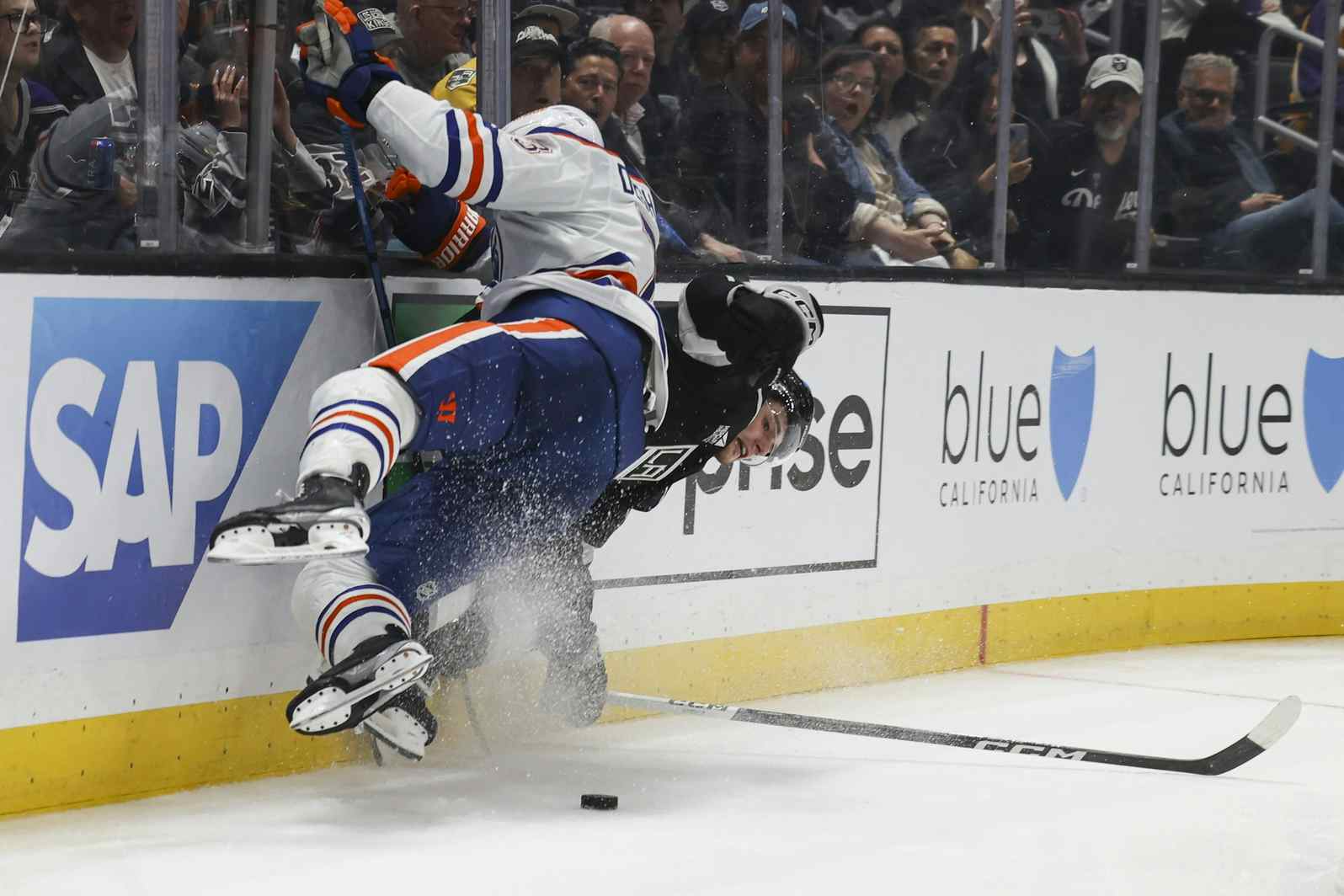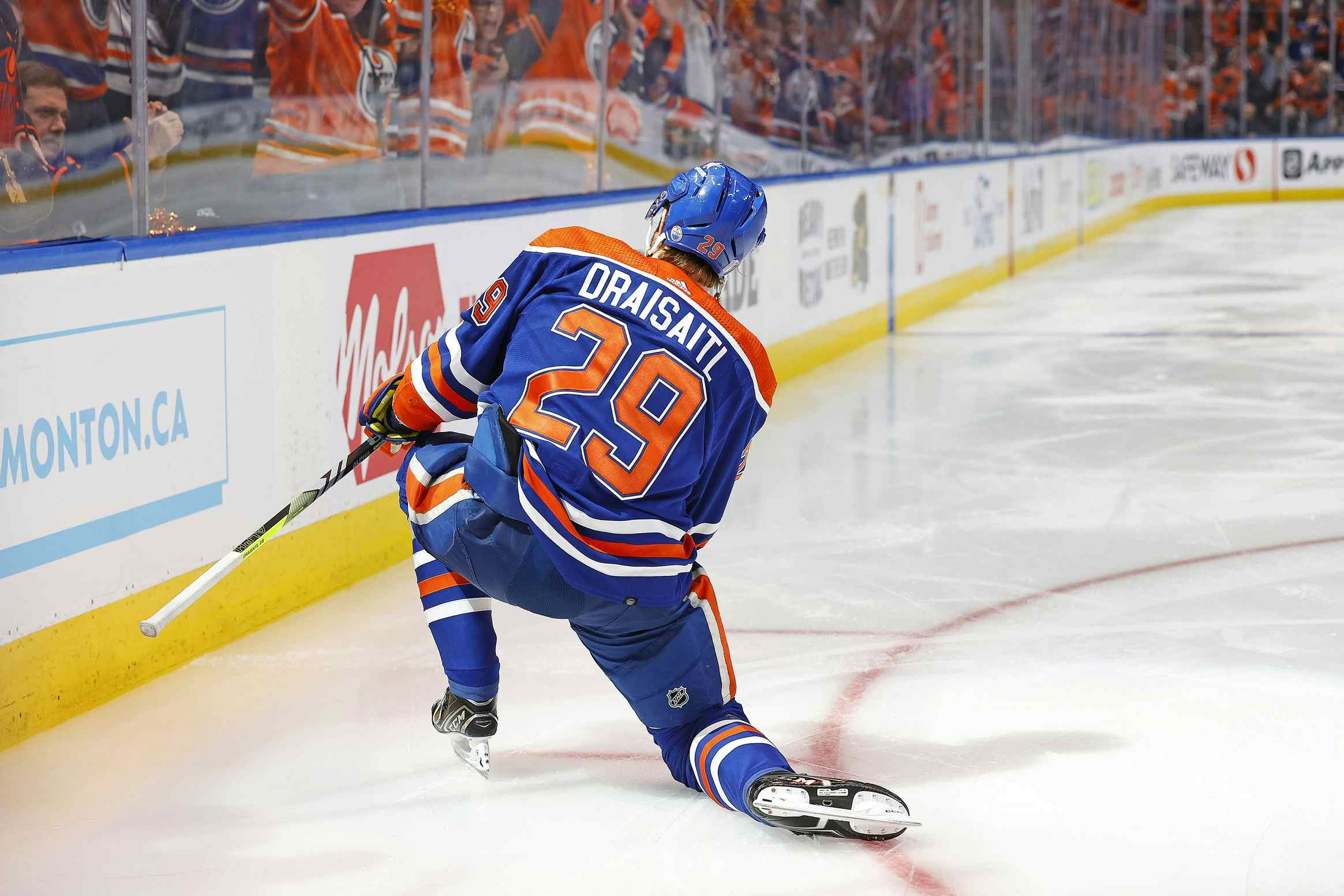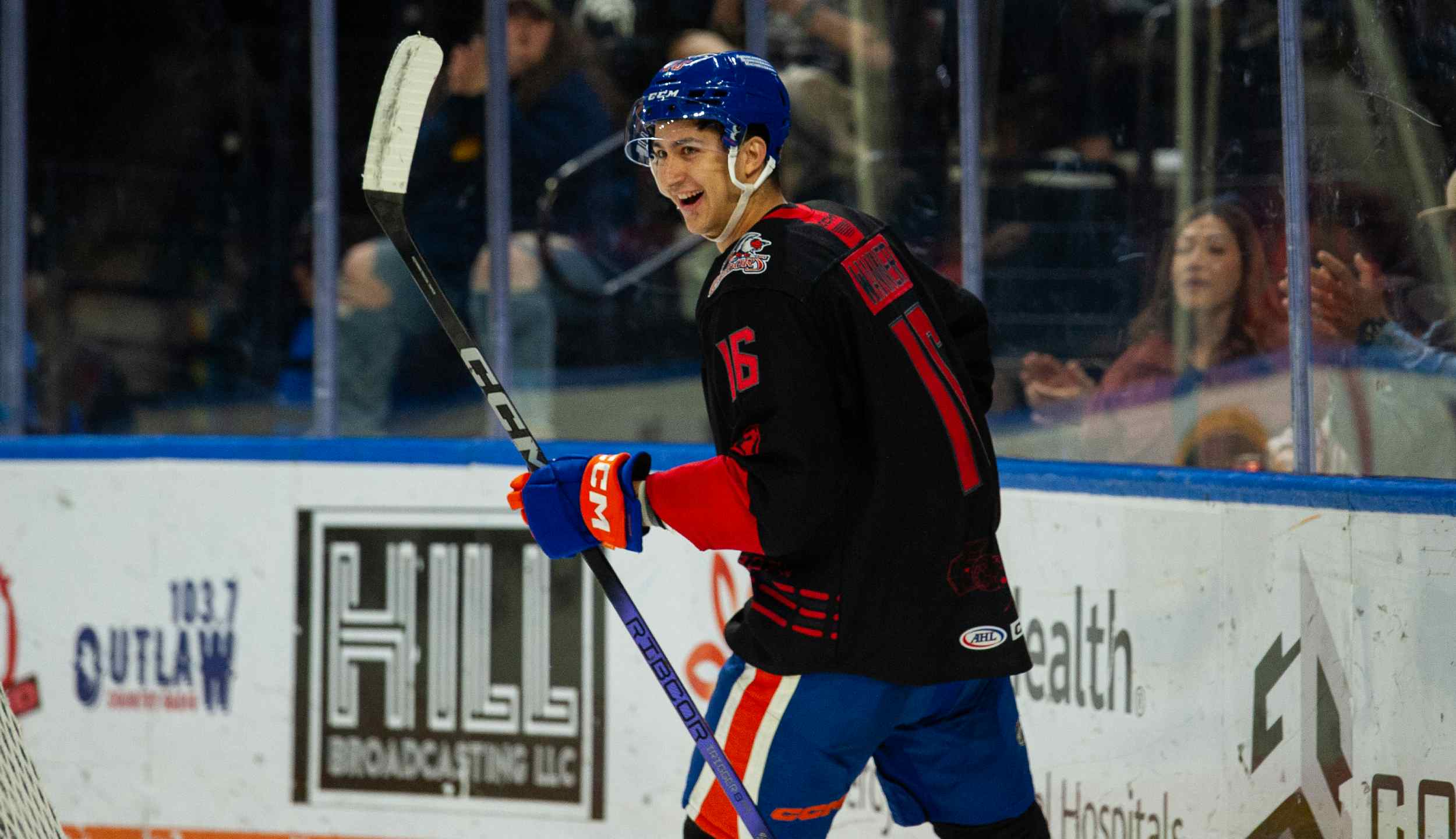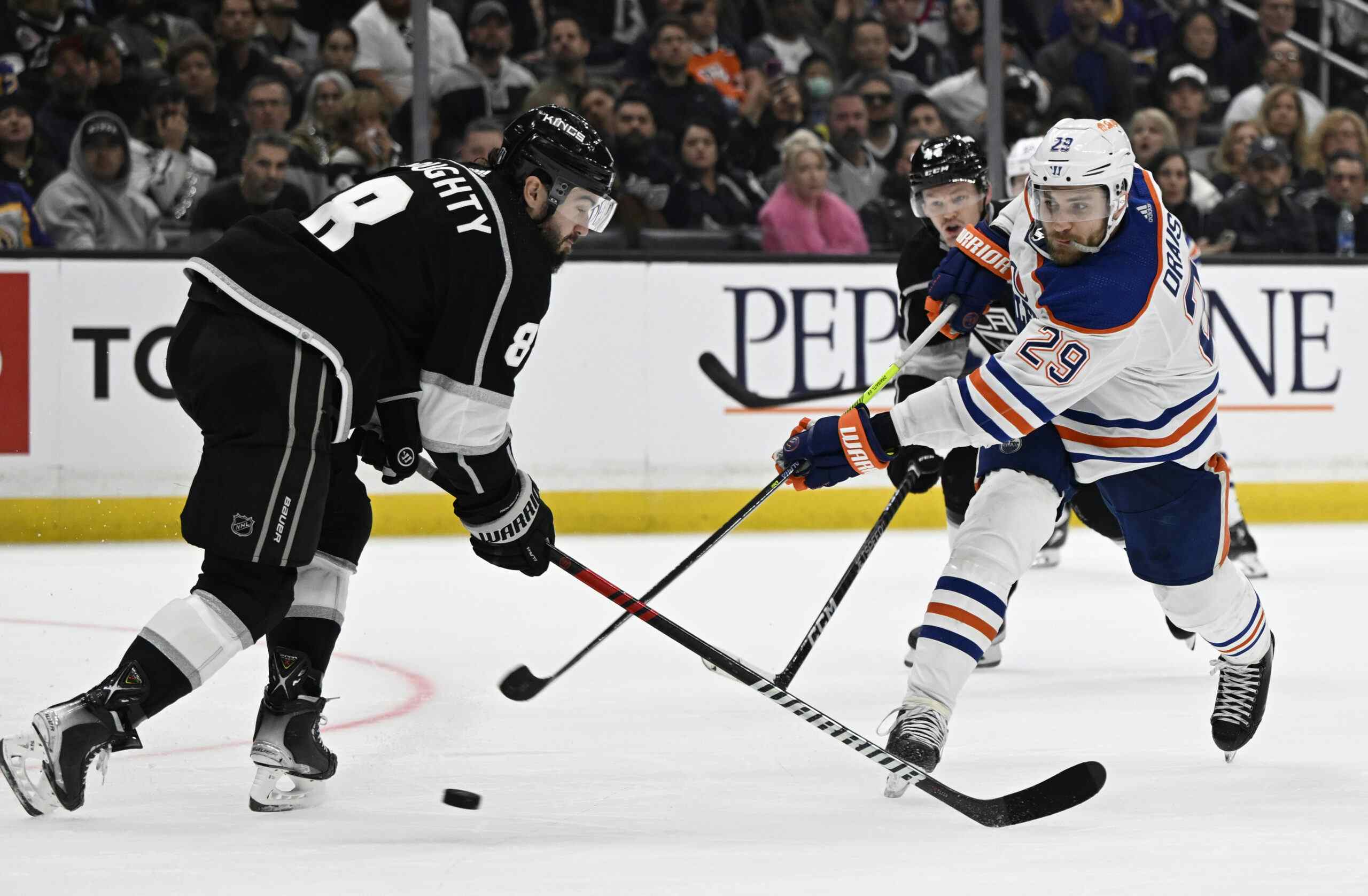Questions that need answers: third edition
By Jason Gregor
15 years ago
What a whirlwind final hour of the trade deadline. Just when it looked the Oilers were going to be shut out, they pull off two deals just before the deadline. On paper the deals should improve the Oilers, but exactly how much remains to be seen. Lots of questions surrounding the deadline and the Oilers so here we go.
***Reminder if you have a question you want answered, send it to Gregor at jason@justagame.ca.
Why did the Kings give up on a young Patrick O’Sullivan?
At first glance, you wonder why a 24-year-old with loads of offensive creativity finds himself in his third organization already. O’Sullivan was drafted by the Wild in 2003, and then traded at the 2006 entry draft to the LA Kings (he was traded with the 17th overall pick, which the Wild had obtained from the Oilers for Roloson).
Now he is dealt for Justin Williams, and then Erik Cole. Williams had back-to-back 30-goal seasons, before he tore his ACL in 2007, and then tore his Achilles in an off-ice pre-season workout. He has played 32 games since returning earlier than expected, but has struggled mightily with only three goals and 10 points.
So why is O’Sullivan dealt for a guy who is injury prone and struggling? I have no idea. Rob Daum, who coached him in Houston in 2005/06 gave him high praise. “I think he is a top-six forward in the NHL. He skates well, has a quick release and is a very good passer.”
I don’t doubt that O’Sullivan possesses those attributes, but Dean Lombardi is a pretty astute GM, and he gave him away for injury-prone 29 year-old. It just doesn’t seem right.
Jarret Stoll told me, “Sully has sick skills. He is a great passer, and isn’t afraid to shoot. He should really help the Oilers. We have been penalty killing together and he is very quick.”
I can see why the Wild traded him, because they wanted a proven passer to play with Demitra, but why the Kings gave up on him is perplexing. What about someone who hasn’t been associated with him? I spoke to a scout from San Jose.
“His awareness on the ice is exceptional. He skates well, but has long stretches where he doesn’t battle hard enough, and can be lazy. When he is on he can be a difference maker, and he isn’t afraid to shoot, but like most players his age consistency is an issue.”
We will see if he can find the consistency to go with his skill set.
If Bill Guerin was scratched on Saturday, why did it take so long for him to get traded?
— Mitch
— Mitch
The Islanders only dressed 19 players v. Buffalo on Saturday, and with Bill Guerin being a late, and supposedly healthy, scratch there was lots of speculation he was going to be dealt. There was lots of talk that the Capitals and Islanders had a deal in place, but somehow it fell through. The Islanders had no choice but to sit him out again on Monday v. Colorado after scratching him on Saturday.
It didn’t look good in my opinion, and it’s fitting that the Islanders ended up getting less for Bill Guerin than the Leafs got for Dominic Moore. After the Capitals deal fell through, it looks like the Islanders just gave Guerin away for anything. Guerin had a no-movement deal and made it clear he only wanted to go to an Eastern team. That left the Islanders seven or eight trading partners in the East. Clearly there wasn’t much interest so the Penguins got him for a conditional pick. If they miss the playoffs the Islanders get a fifth, if they make it a fourth, and if they win one round a hird. Not much for a guy who sat out two games.
Is it a coincidence that most of the scumbag, loser, and dirtiest trash hockey players in the NHL have at some point played for Mark Crawford?
— Dan
— Dan
As a player, Crawford was chippy and intense. He has been behind the bench with players like Claude Lemieux, Chris Simon, Todd Bertuzzi, and Sean Avery.
I think it’s more of a coincidence that they were on his team. He inherited all of them, excluding Lemieux whose first season in Colorado came in Crawford’s second as coach of that organization. But do I think he liked his players to play on the edge? You bet.
Crawford has always had a few players who played on the edge, and in some cases crossed the line. If you’re insinuating that Crawford is the reason they were cheap players, I would disagree. I’ve spoken to players who played for him and they said he was intense, and wanted his team to play an in-your-face style. But I don’t believe he told Lemieux to crosscheck Draper into the boards, and I still don’t think he told Bertuzzi to cheap shot Steve Moore to the extent he did.
There are many coaches who encourage their players to intimidate the opposition, but when a player commits a flagrant cheap shot, I find it hard to believe the coach told him to carry it out in that fashion. I know coaches have given guys the tap on the shoulder to go fight, or encourage their guys to “run” the opposition, but the decisions by Bertuzzi and Lemieux were ultimately made by those gents.
I’ll be having Ron Low in studio very soon, and when I do I will ask him about Crawford’s decision in round one of the 1998 playoffs when he had Warren Rychel and Jeff Odgers on the ice late to pound some non-heavyweight Oilers.
Why are Cogliano and Gagner so bad on draws? What do they need to do to improve?
— DJ
— DJ
I see a few reasons. First off, neither one is that strong just yet and their technique is their biggest downfall. When you watch them getting lined up for the draw they don’t look comfortable. Adam Oates wasn’t the strongest guy but he had incredible technique. Rod Brind’amour has strength and technique. Jarret Stoll has both as well. But 13 and 89 have neither right now. They will naturally get stronger as they mature and work out more, but their technique better improve or it won’t matter.
Stoll told me a few years back that just entering the draw from the right angle can make a difference. Some other nuances include, the angle they put their stick at before engaging, finding a position that allows their body to move fluidly. It seems simple but lots of faceoff guys swear these nuances are what separate a guy from being 55% instead of 50%. Heck if Cogliano could be a 47% guy that would be major improvement. Both youngsters need to work harder at honing their skills on the dot, and Cogliano would probably see an increase of two to three minutes a game just because of it.
When is the right time to fire a coach?
— Noel
— Noel
Very tough question to answer. Look at the recent firings in the NHL and there is no trend that seems to suggest what is right. Atlanta, LA, Tampa, NYI, Colorado, Florida, San Jose and Toronto all had new coaches at the start of the year. Right now only San Jose and Florida are in the playoffs and San Jose was a great team before the coaching change.
Chicago and Tampa made changes early in the year, and it seems to have helped the Hawks but the Bolts still stink. Recently Pittsburgh, Ottawa and the Rangers have made changes. The Pens are 6-1-1 under Dan Bylsma. The Sens are 6-5-3 under Cory Clouston and the Rangers are 1-1-1 under John Tortorella.
The Sens have improved a bit, the Rangers are even and the Pens are finally playing like they should. I’ve always thought that coaching is a bit overrated. If you have good or great players they will make you look better. Some coaches can have teams improve by five or six wins a year, but I don’t think coaching can make a team go from average to great.
I think timing is based on a feel. The GM needs to know his players and the dynamics of the room. Have they quit on the coach? Do they need to hear a new voice? Does the system fit the players?
To me it is easier to fire a coach than suggest as a GM that you haven’t given him any legitimate tools to work with. Look at the eight new coaches that started the season: have any of them made a significant difference to the standings of their team? Peter Deboer in Florida might be the only one. They are on pace to finish with eight more points than last season, and should make the playoffs barring a collapse. I do think coaching can improve your team by four to five wins over the season, but most of it is up to the players to respond and play the system.
I think a change can have positive effects in that certain players will respond better to a new coach. The curiosity of how the Oilers would play without MacTavish is hard to ignore. You will find out next season if the Oilers don’t make the playoffs, or if they have an uneventful first round exit.
Will the Oilers’ new players be enough to get the Oilers in the playoffs, and who do you think is their best match-up in the first round?
— Steven
— Steven
I think O’Sullivan and Kotalik, along with the fact that Minnesota, Nashville and Anaheim didn’t improve will be enough to get the Oilers in the playoffs. Before the Flames got Jokinen, I would have said the Flames were the best match-up, but now I’m not so sure. It is either the Flames or the Blackhawks, and based on the results between them so far this season you would have to think the Flames might be the best bet. I do think that the Hawks’ inexperience makes them more vulnerable than the Flames, but screw logic.
I’d rather see a Battle of Alberta over any other first-round match-up. Detroit and San Jose would dominate the Oilers, while the Hawks and Oilers could be free wheeling, it wouldn’t have the intensity of a BOA.
It has been 18 years since the Oil and Flames did battle for a meaningful game and that is long enough. The Flames have wrapped up third place, so it’s up to the Oilers to get sixth. If they have to throw a game at the end of the year to make it happen, they better do so.
The fans need it, the media wants it, and the players should experience it. A playoff battle between the two cities after so long without one would be epic. All the Oilers have to do is be better than Columbus and Nashville down the stretch to make it happen. Really is that too much to ask? I think not.
Recent articles from Jason Gregor





